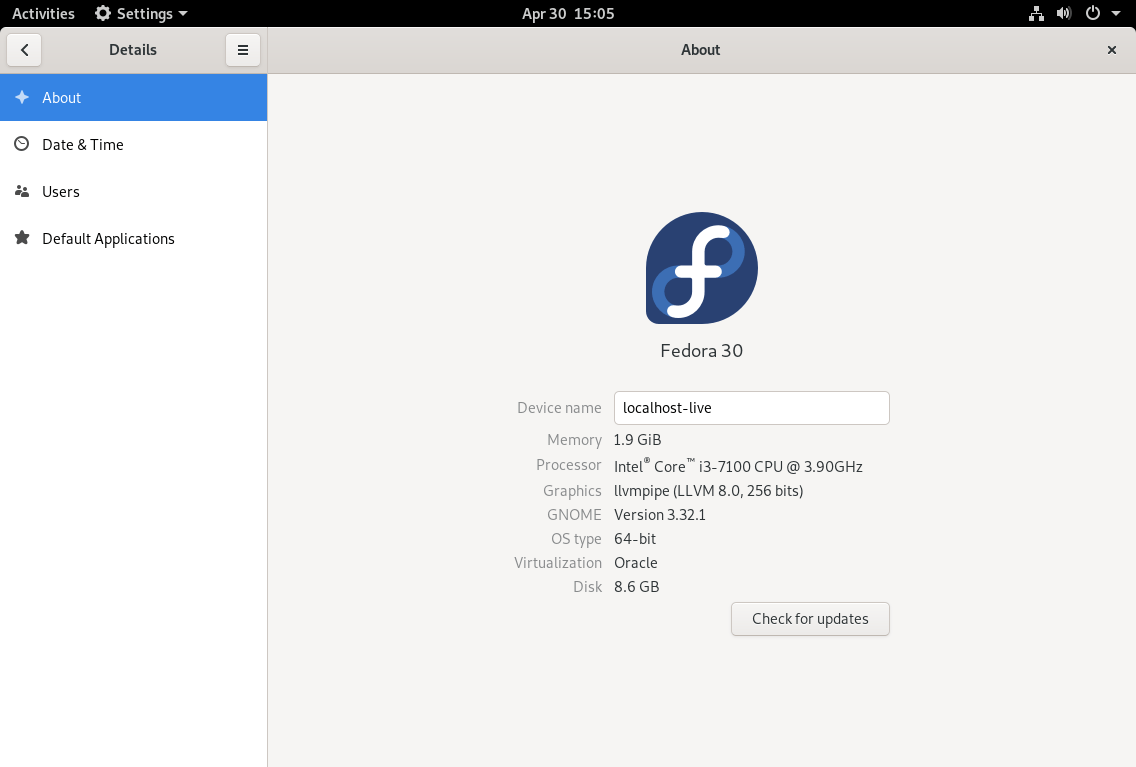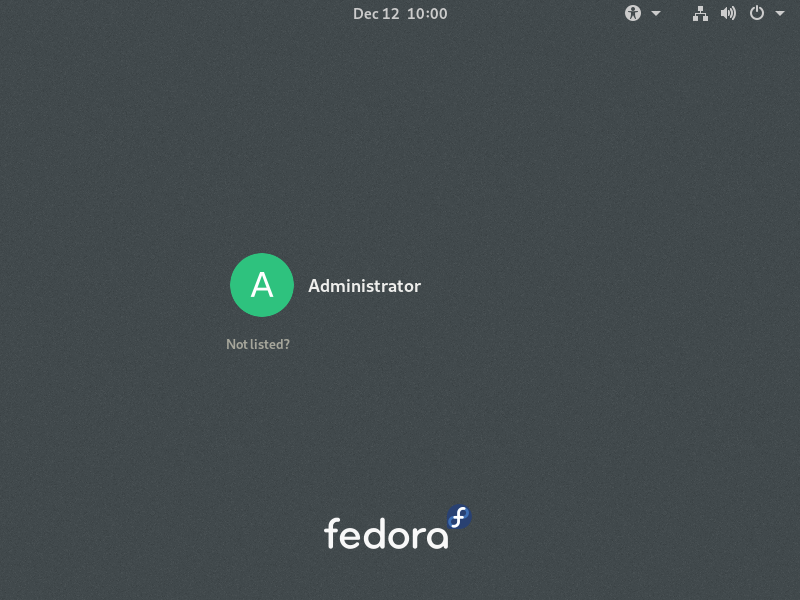

- #Fedora workstation commands install#
- #Fedora workstation commands update#
- #Fedora workstation commands software#
- #Fedora workstation commands free#
Frippery Move Clock: Moves the clock to the right side of the panel.
#Fedora workstation commands install#
In order to be able to use themes from your ~/.themes folder, you must install this extension first. Should make the fonts sharper and more suitable for large LCD screens! 10. Just navigate using GNOME Tweaks to the fonts tab, and make sure the following two checkboxes are triggered regarding font hinting and antialiasing: If you are using LCD screens, then you can get better font rendering settings than the default.

To restore them back, open your GNOME Tweaks and apply the following: 9. You’ve probably noticed that when you saw that there are no minimize or maximize buttons in any of your open windows. Restore Minimize and Maximize Window Buttonsįor some historic reasons, GNOME desktop ships with a lot of autistic choices when it comes to user experience. To install it, apply the the following command: sudo dnf install gnome-tweaks 8.
#Fedora workstation commands software#
Sadly it does not come with a lot of customization options by default, but you can install the GNOME Tweaks software for additional settings that you can adjust. The default desktop in Fedora Workstation is GNOME.
#Fedora workstation commands free#
Above that, it’s free and open source.Ī simple DNF command would work: sudo dnf install vlc 7. Its main feature is that it can run the multimedia formats you may see and supports all codecs. One of the most famous multimedia players all over the world. It’s better for you to try a set of different addons and extensions: Since you are – probably – going to use it every day.

Get Important Firefox Addonsįirefox is the default web browser in Fedora. Notice that you need to activate RPMFusion repositories before you start using Fedy (Or some software you install will give you errors). To install Fedy on the latest Fedora release make sure that you’ve already enabled the RPM Fusion repositories in the previous stop, and then run the following commands: sudo dnf copr enable kwizart/fedy It can even install GPU drivers, network drivers, development tools, multimedia codecs, and extra fonts… Much and much more. From normal apps to themes and passing by various tweaks to the system, Fedy can almost do everything you may need on Fedora. The application allows you to run a set of pre-defined system commands which will install and configure a lot of stuff. Install Fedyįedy is a graphical tool that allows you to tweak your Fedora system in a few clicks. If you don’t know what you are looking for, consider using the search box on their website. You can go ahead and install any package you need from RPM Fusion. There are two repositories to add here: One of them is the free repository which only contains free software, and which you can install by running: sudo rpm -Uvh $(rpm -E %fedora).noarch.rpmĪnd the non-free repository, which, just as its name suggests, contains non-free software: sudo rpm -Uvh $(rpm -E %fedora).noarch.rpmĪfter you’ve added those repositories. It’s a repository that ships what Fedora doesn’t accept. Most of the time, you can find additional packages that you might need in the RPM Fusion repository. Enable RPM Fusionĭue to Fedora’s policy on shipping packages which does follow certain standards and rules related to patents and the liberty of software, some packages are not available to be installed from the official Fedora repositories.
#Fedora workstation commands update#
To update your system, simply run the following command: sudo dnf update 2. Running an update for your system packages would be a wise decision to do before starting to use the system and complaining later about problems that may already be solved. In most cases, there are a lot of updates and bug fixes for problems that may exist in the latest release. This should be pretty obvious in any new installation for any Linux distribution. This guide will help you through this part. If you are a new Fedora user, you may be wondering about what to do after installation.


 0 kommentar(er)
0 kommentar(er)
